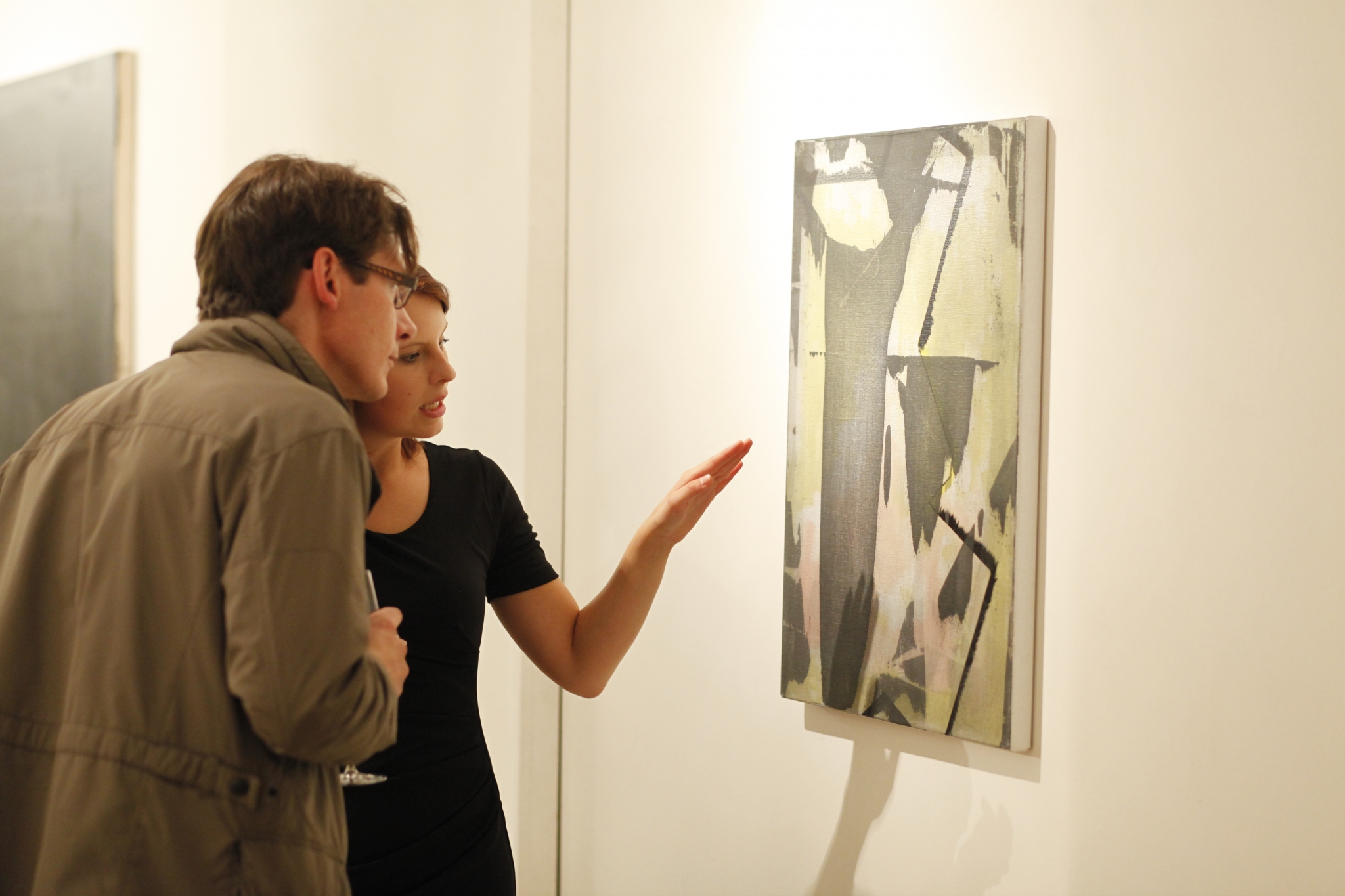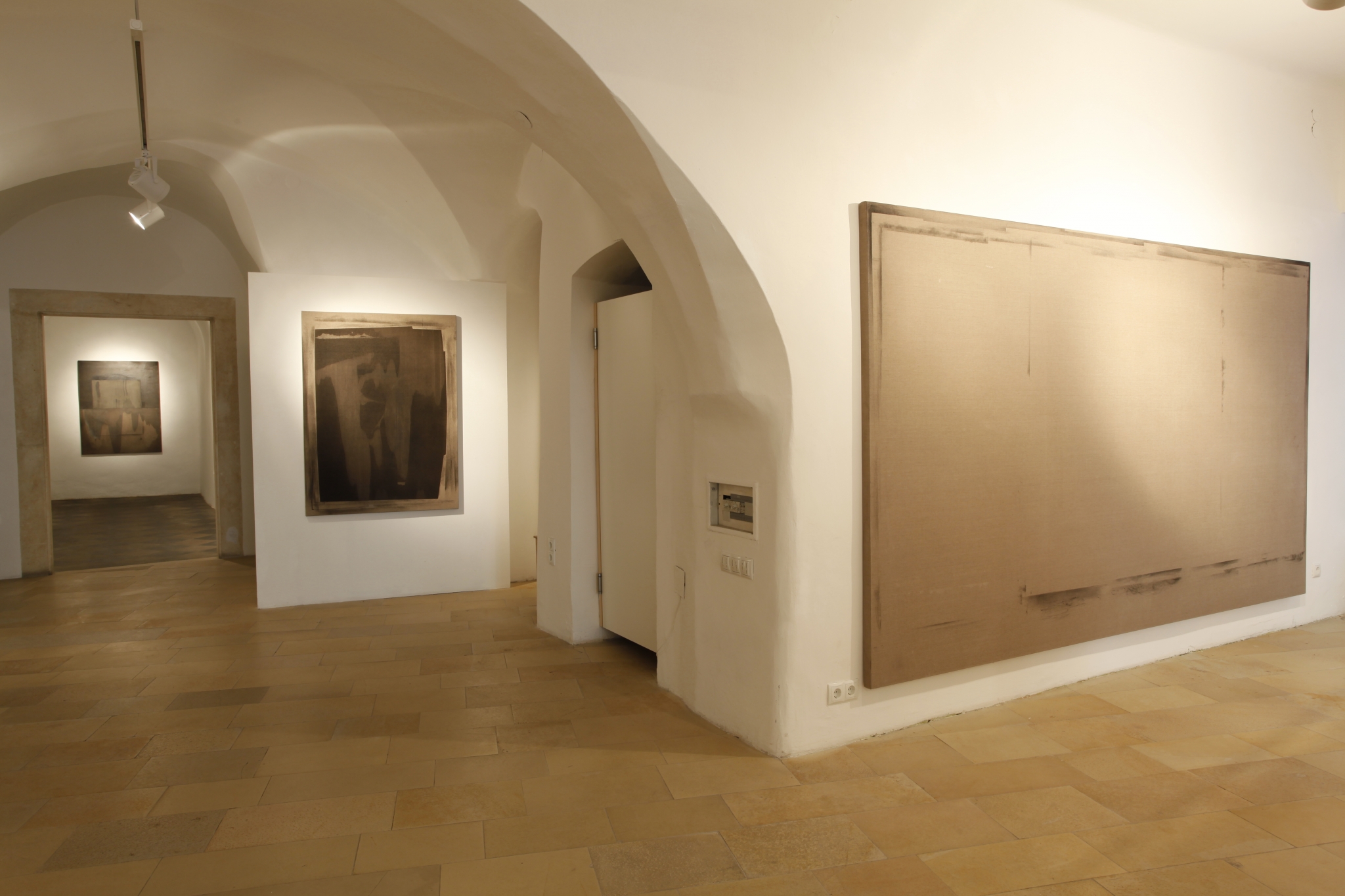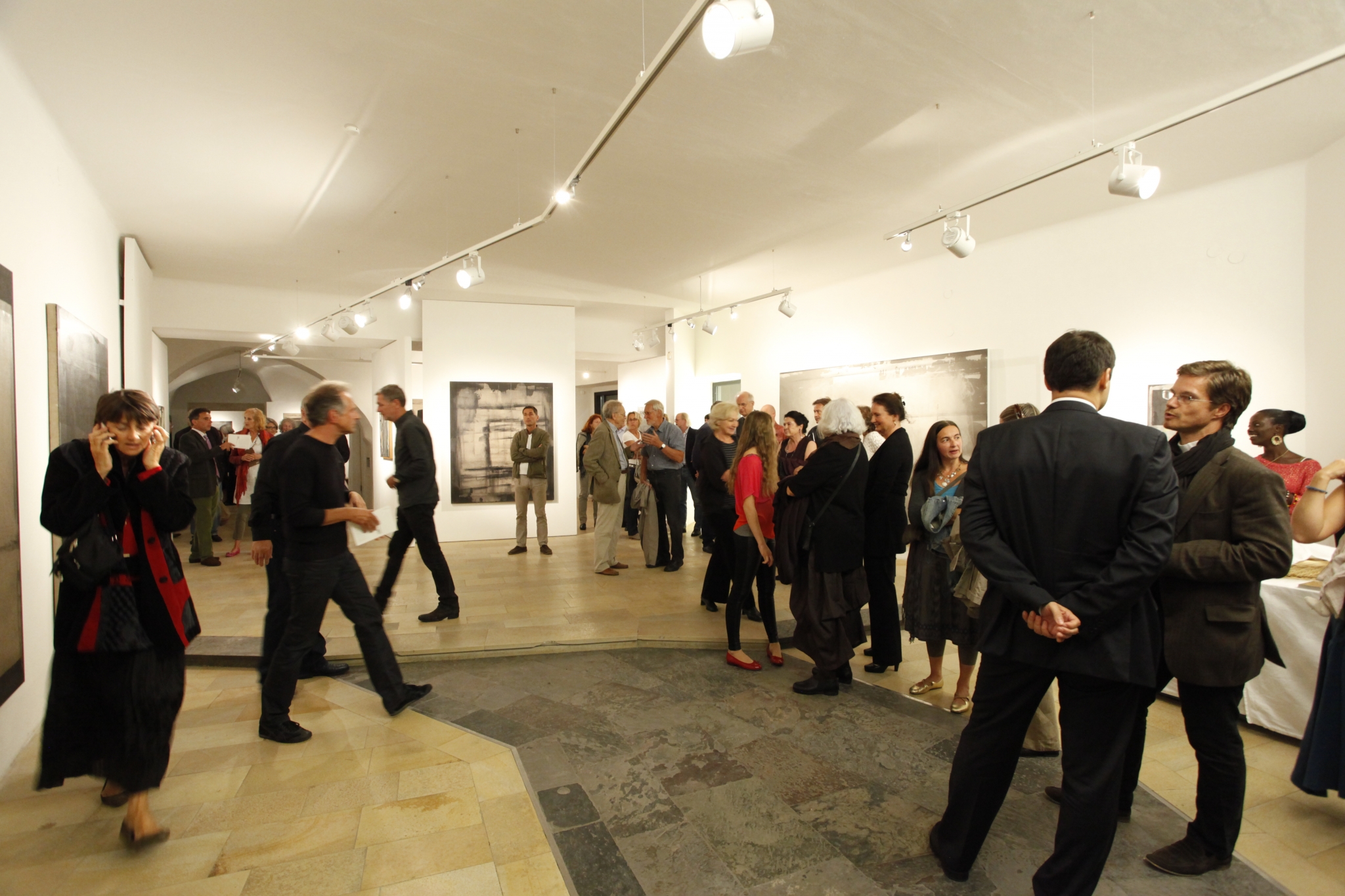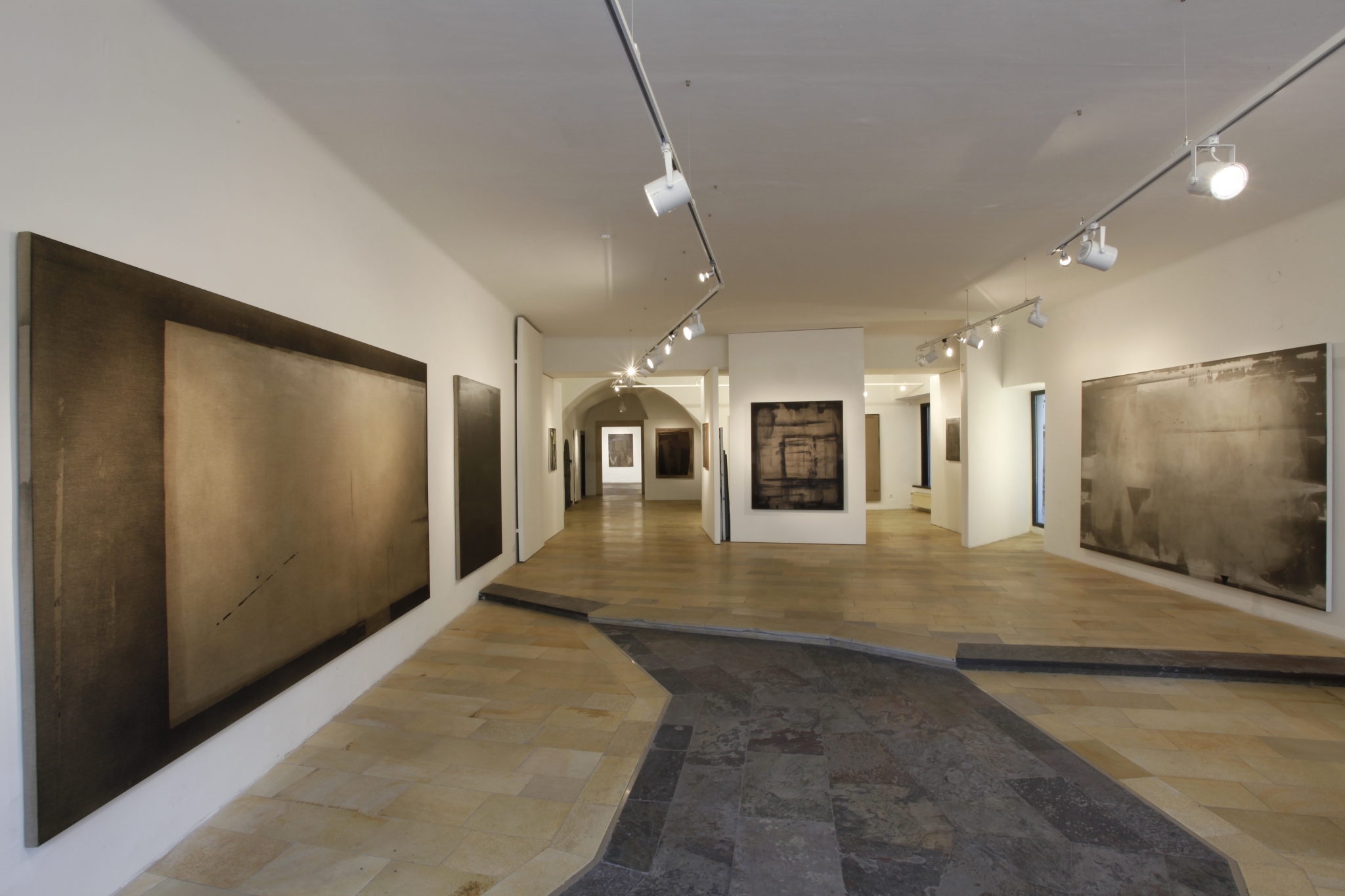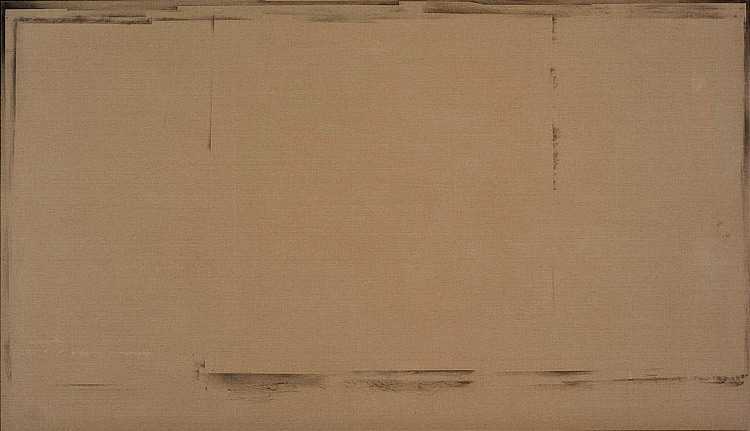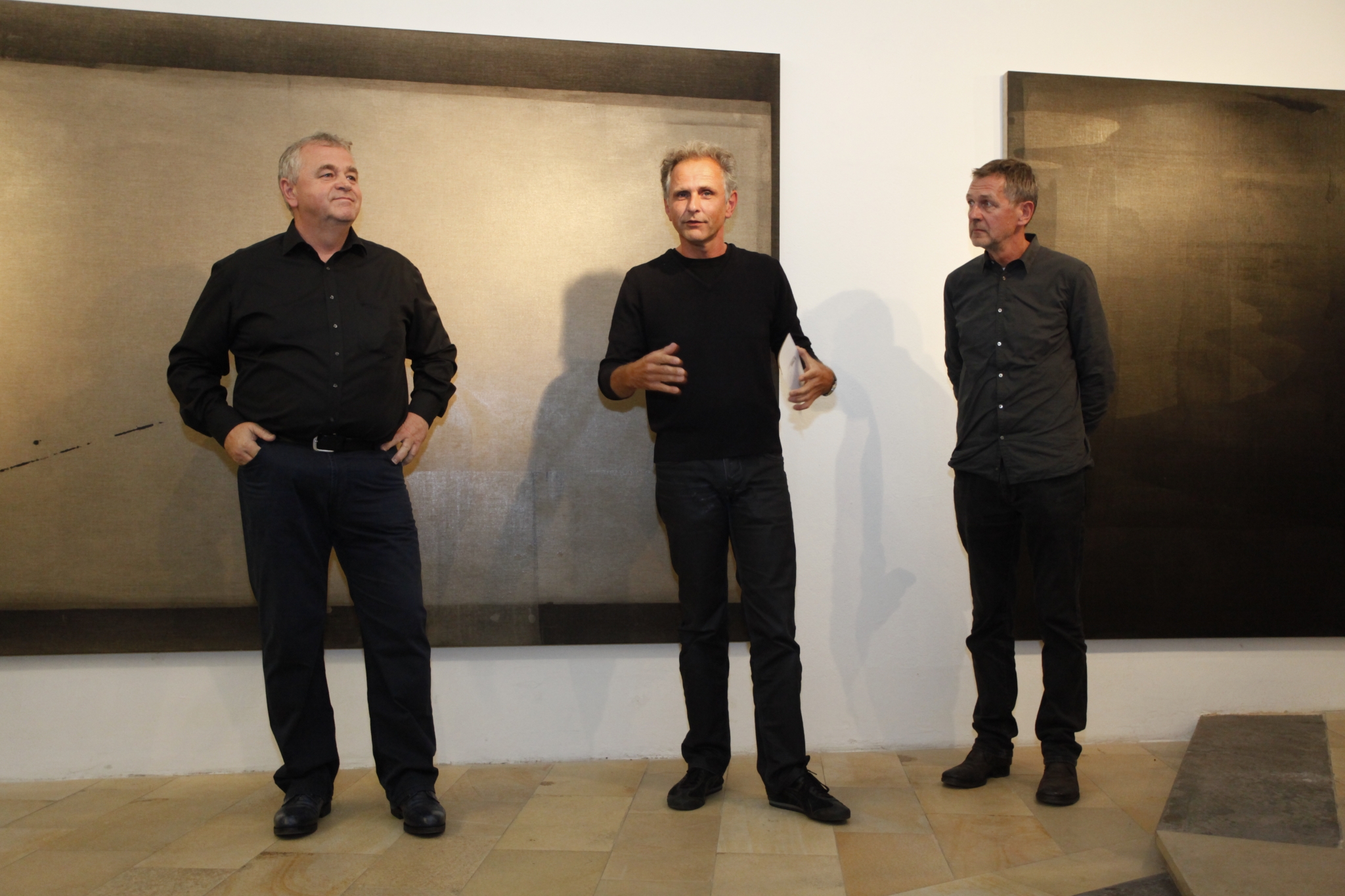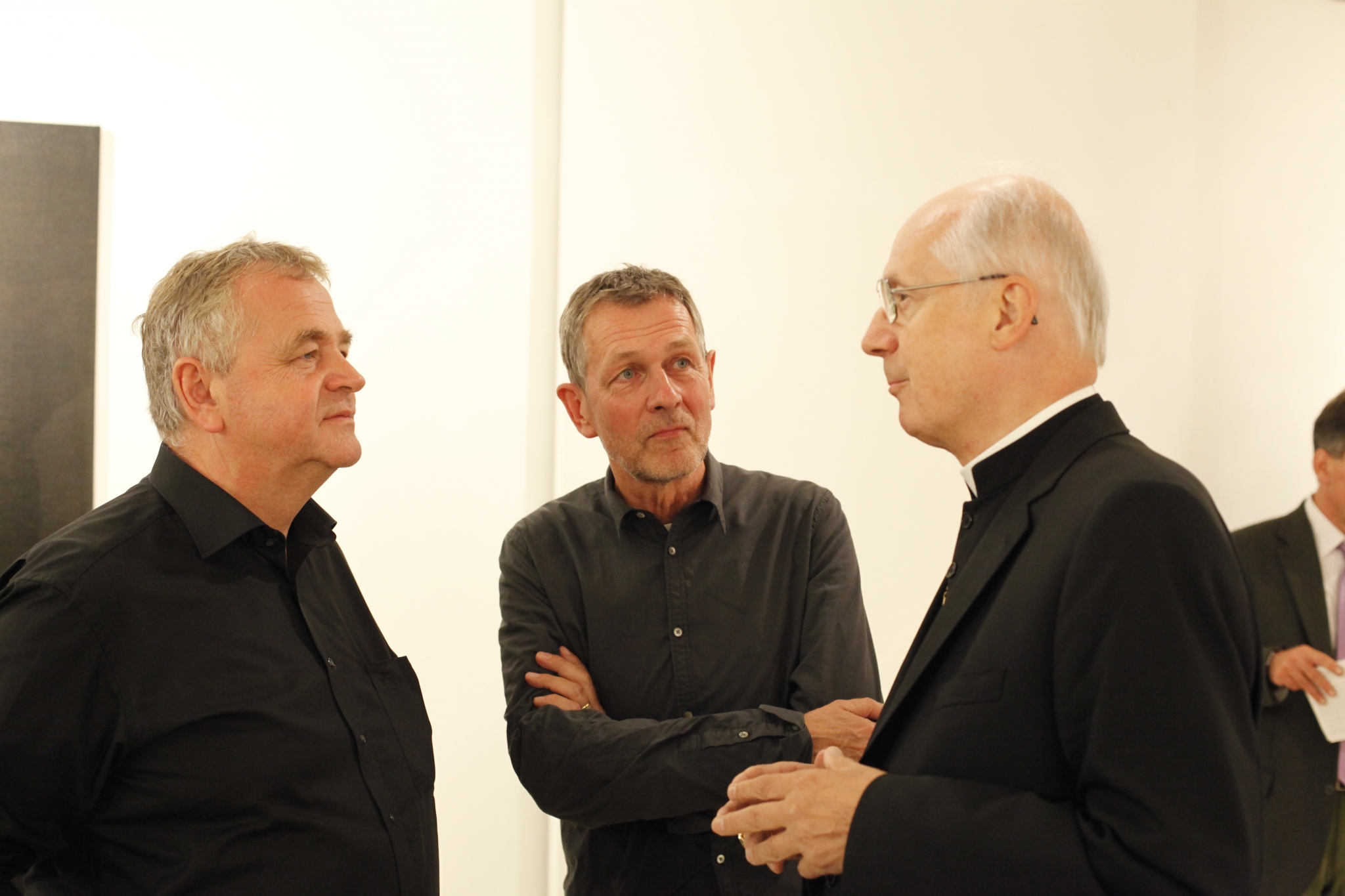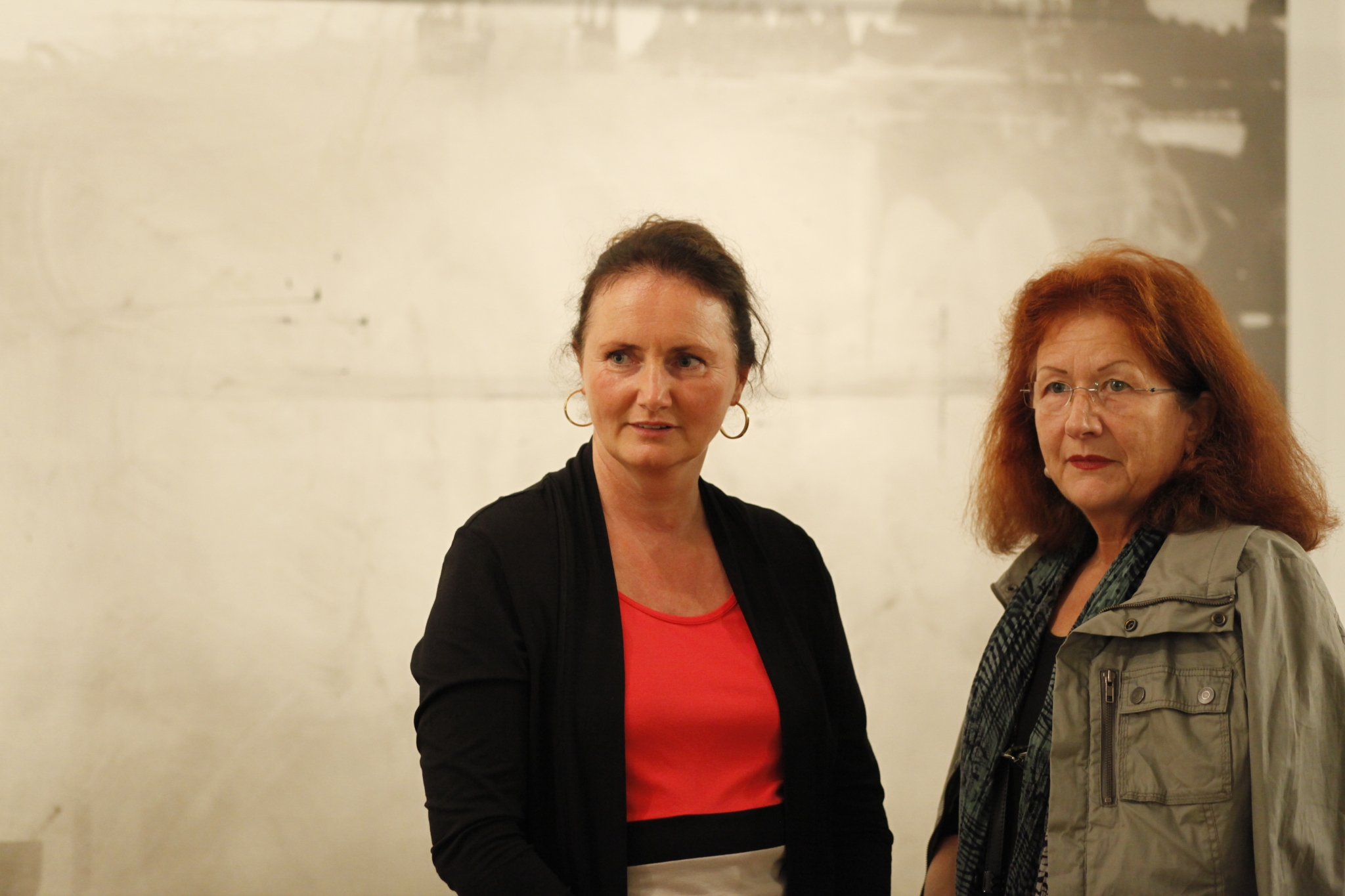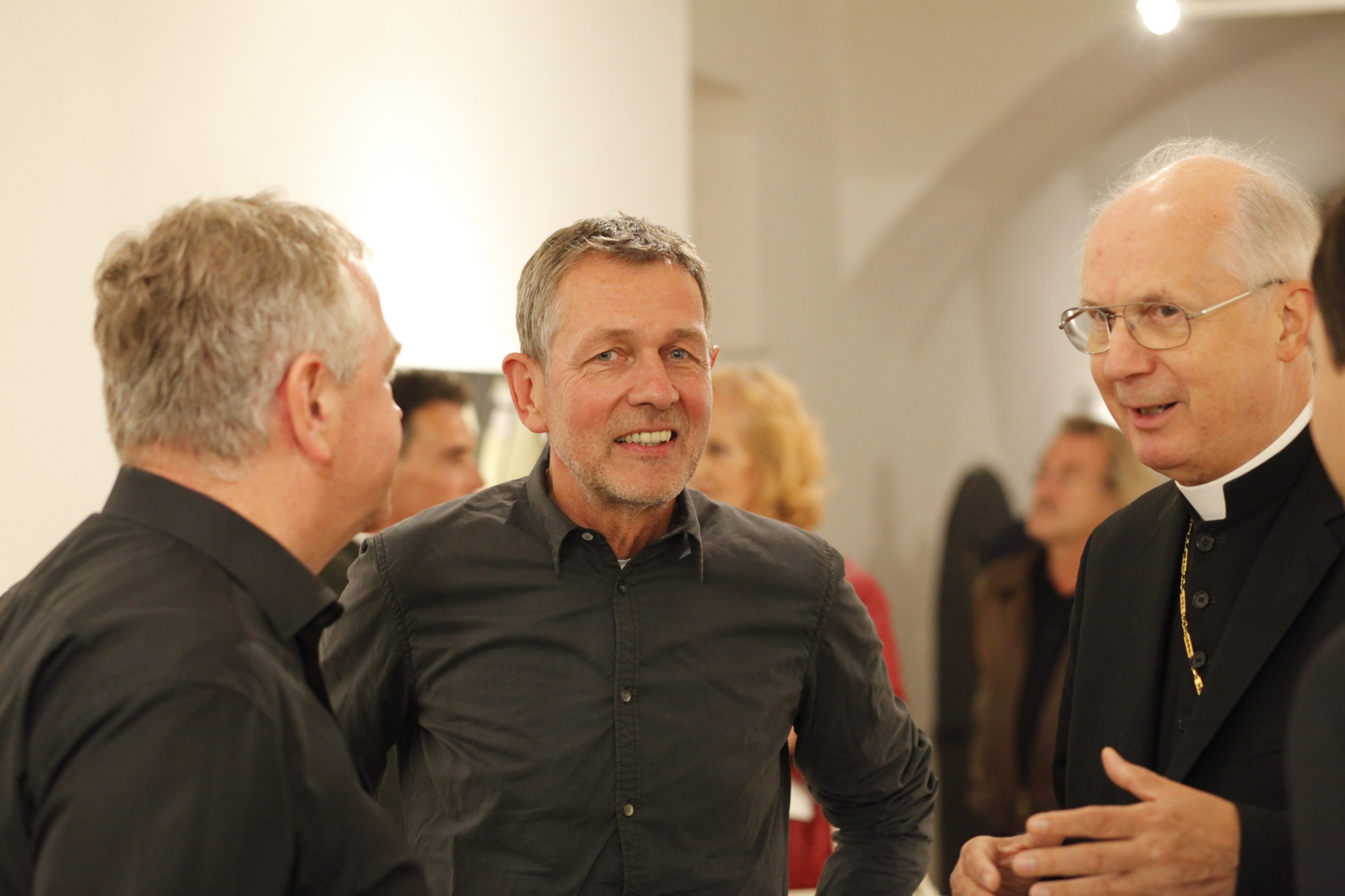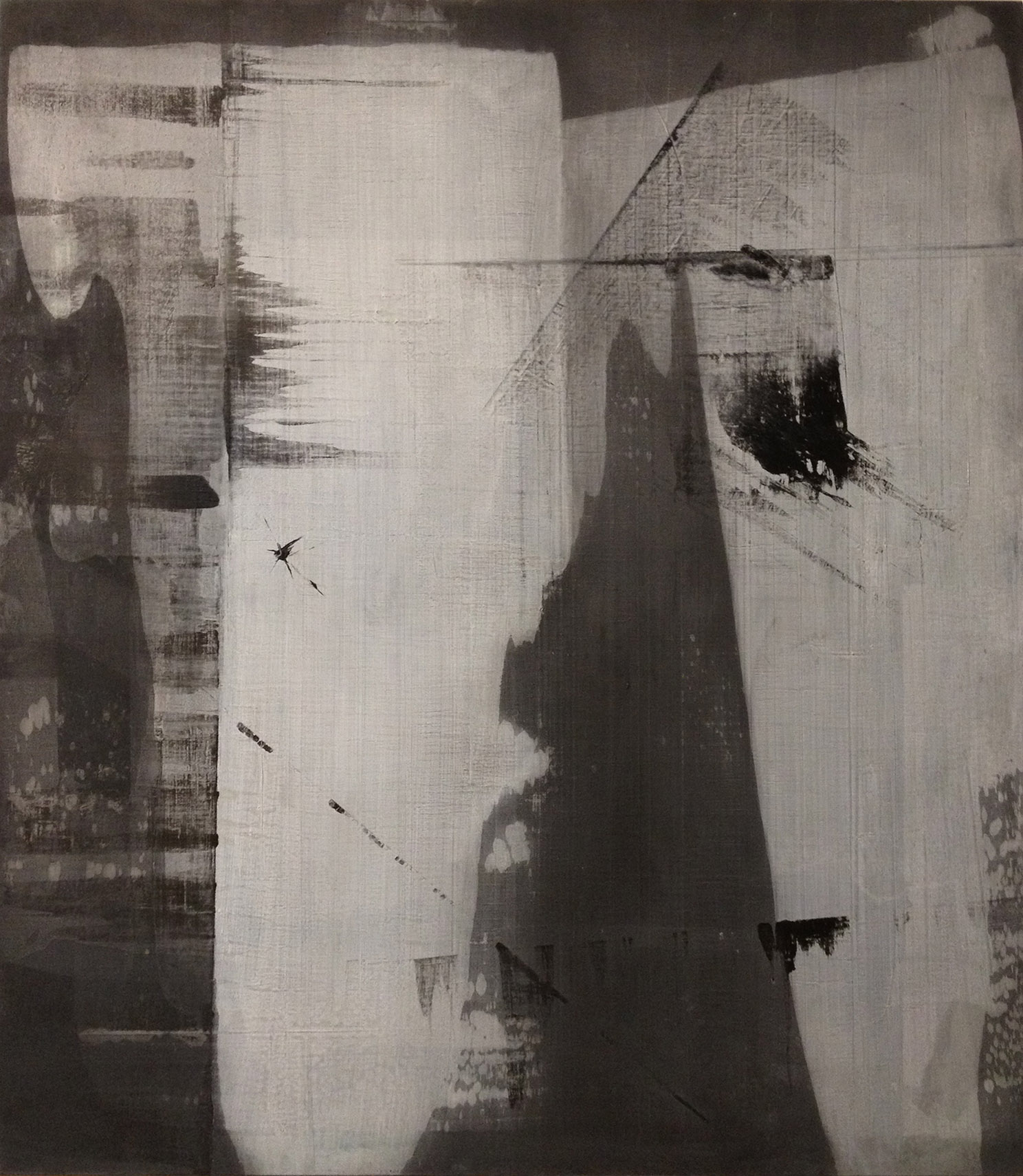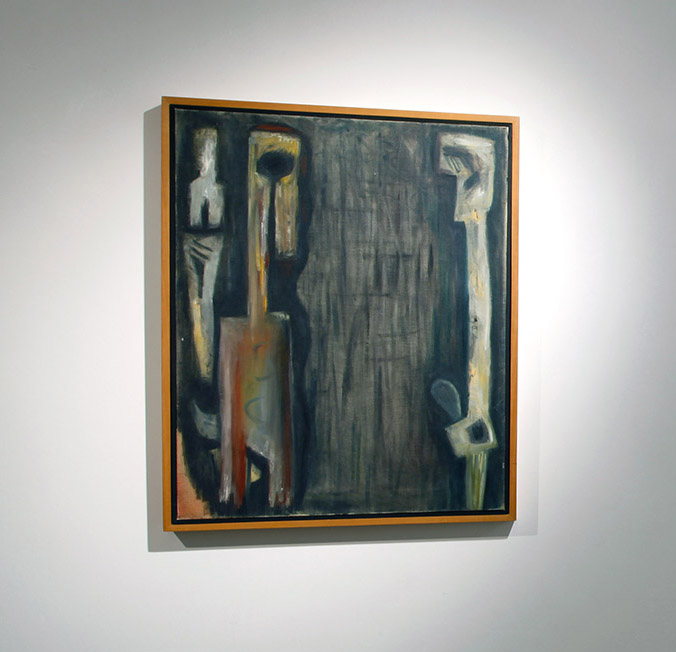24th of September – 13th of October 2012
The Austrian artist Erwin Bohatsch was surely one of the first to distance himself from the context of the so-called Neue Malerei (New Painting), a term coined in the 1980s to denote a new turn towards sensuality in Austrian painting and art in general. His colleagues more or less remained loyal to it until this day. Bohatsch, however, soon abandoned the initial narrative exuberance and the figurative representation of the remainders of archaic and seemingly remote mythologies, and entered an analytic examination of abstract painting, which led him to become one of the most radical local representatives of this genre.
A grappling with the bare essentials of painting marks Erwin Bohatsch’s latest works. Reduction of materials as well as of colour characterises his journey along a line, which divides paint jobs from artistic expression. Minimal colour (usually black) applied to a non-primed canvas creates the impression of a by-product or the preliminary. Only the cultural context of painting as an artistic genre converts what is seen into an engrossing attempt to pare down painting to the extent of rendering it a memory of itself. The remnants of painting on the canvas, which appear like the result of working with stencils, are evidence of the process-oriented nature of the medium, but also of the artist’s efforts to free it of the pathos that ultimately always leads to its demise.
In his new works, Erwin Bohatsch acts more radically than ever. The link between visual remnants and a cultural imprint that accepts them as part of a formal canon is especially perceptible here. The artist appears to want to let the audience know that, ultimately, it is also up to him to determine what can still be perceived as painting. Since every formal step on the canvas takes an exact consideration and reflection of the artist as a point of departure, Bohatsch’s approach is conceptual and at the same time of a high sensory perceptibility. The culinary aspect of painting is neither directly sought nor avoided at all costs. Yet the viewer can transform it from factual-technical to sensitive-aesthetic, depending on his or her visual conditioning.
Günther Holler-Schuster

